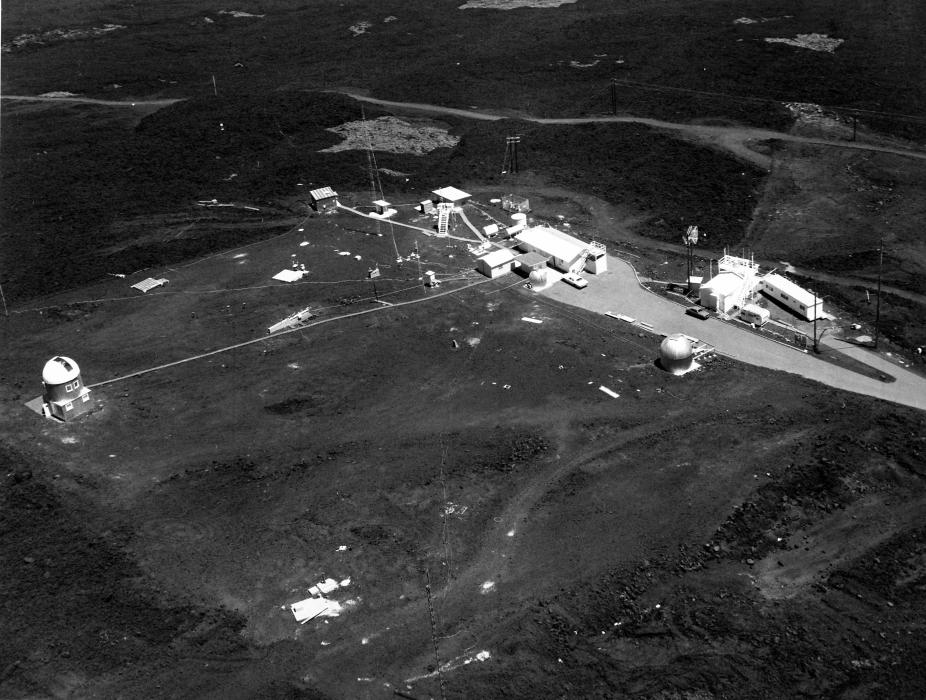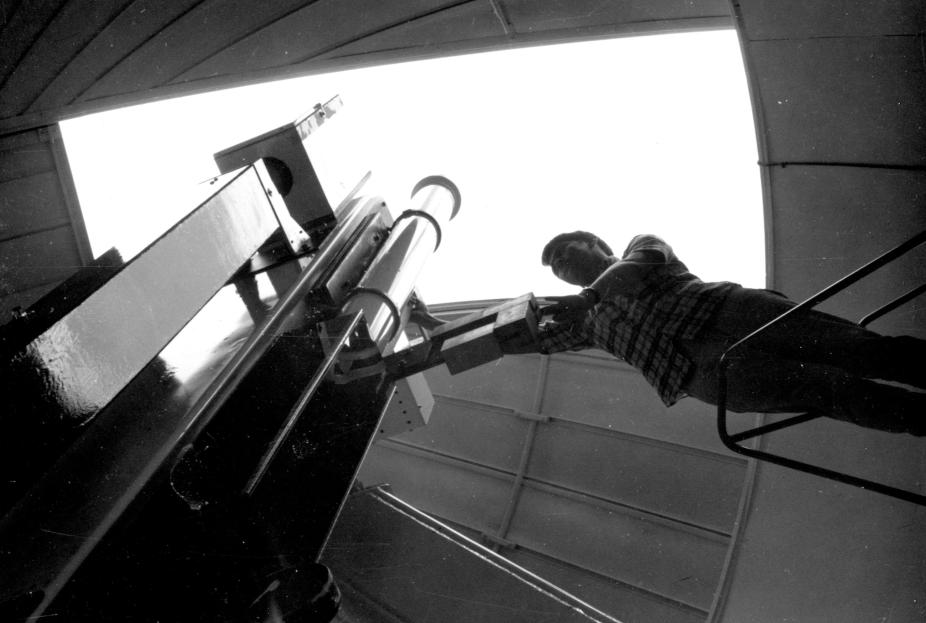Mauna Loa Solar Observatory
The Mauna Loa Solar Observatory opened in 1965 and housed the K-coronameter (an instrument for observing the solar corona) that had originally been used in Climax, Colorado, at HAO's first location.
The site on Mauna Loa was chosen for a few reasons, including:
- The high elevation and generally clear skies in the area allowed for good visibility of the sun.
- Mauna Loa is also an active volcano (it last erupted in 2022), so it is covered in lava fields. Because of this, it doesn’t have atmospheric contamination caused by pollen, insects, or blowing dust which are present in many other mountain locations.
- The National Weather Bureau (now the National Weather Service) already had a site on Mauna Loa and allowed HAO to use space for the observing station.

The observatory sits at an elevation of 3,440 meters on the flank of the Mauna Loa volcano.
It might seem risky to build an observatory on an active volcano! But, it was determined that the risk was fairly low because the volcano typically gives quite a bit of warning before an eruption and the lava flow is usually slow enough to give plenty of time for evacuation.
HAO added a 16-and-a-half foot observatory dome at the Weather Bureau site and installed the first instrument in December 1965. HAO scientists Dick Hansen and Charles Garcia made the first solar observations from Mauna Loa Solar Observatory on December 12 of that year.

Aerial view of the Mauna Loa Solar Observatory and the National Weather Bureau station.

Scientist adjusts equipment in the observatory.
The first instrument used at the Mauna Loa Solar Observatory was the koronameter (or K-coronameter). The koronameter was developed at HAO in 1955 by Gérard Wlérick and James Axtell. It was used to observe the K-corona, the bright inner portion of the solar corona that comes from sunlight scattered by free electrons. Studying the light from the K-corona helps scientists learn more about temperature changes in the solar corona as well as solar radio emissions (electromagnetic waves emitted from the Sun that can impact radio communications on Earth).
Take a look at this silent film footage to get an idea of what operations at MLSO were like in the 1960s and 1970s!
Visit the MLSO page to learn about current research happening at the site.